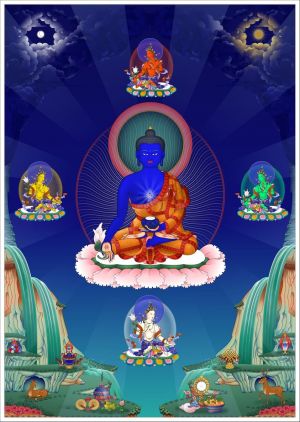Contributions of Dignaga and Dharmakirti
Dignaga’s Pramanasamuccaya (“Compendium of the Means of True Knowledge”) is one of the greatest works on Buddhist logic.
Dignaga gave a new definition of perception: a knowledge that is free from all conceptual constructions, including name and class concepts. In effect, he regarded only the pure sensation as perception. In his theory of inference, he distinguished between inference for oneself
and inference for the other and laid down three criteria of a valid middle term (hetu)—that it should “cover” the minor premise (paksha), be present in the similar instances (sapaksha), and be absent in dissimilar instances (vipaksha).
In his Hetuchakra (“The Wheel of Reason’ ”), Dignaga set up a matrix of nine types of middle terms, of which two yield valid conclusions, two contradictory,
and the rest uncertain conclusions. Dignaga’s tradition is further developed in the 7th century by Dharmakirti, who modified his definition of perception to include the condition “unerring” and distinguished, in his Nyayabindu, between four kinds of perception: that by the five senses, that by the mind, self-consciousness, and perception of the yogins. He also introduced a threefold
distinction of valid middle terms: the middle must be related to the major either by identity (“This is a tree, because this is an oak”) or as cause and effect (“This is fiery, because it is smoky”), or the hetu is a nonperception from which the absence of the major could be inferred. Dharmakirti consolidated the central epistemological thesis of the Buddhists that perception and inference
have their own exclusive objects. The object of the former is the pure particular (svalakshana), and the object of the latter (he regarded judgments as containing elements of inference) is the universal (samanyalakshana). In their metaphysical positions, Dignaga and Dharmakirti represent a moderate form of idealism.
Source
[[1]]
